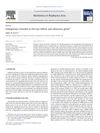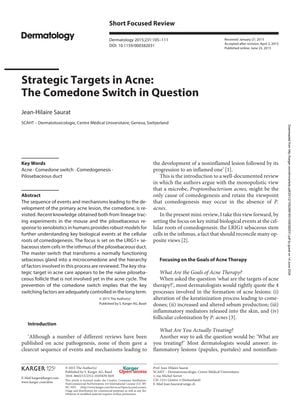TLDR The best way to treat acne is to prevent healthy skin glands from turning into acne lesions by controlling the triggers early on.
The document reviews the process of comedone formation, which is the primary lesion in acne, by examining recent research on sebaceous stem cells and the pilosebaceous response to external substances. It highlights the role of LRIG1+ sebaceous stem cells located in the isthmus of the pilosebaceous duct and discusses the 'master switch' that leads to the transformation of a healthy sebaceous gland into a microcomedone. The paper suggests that the most effective strategy for acne treatment is to target the unaltered pilosebaceous follicles before they enter the acne cycle, emphasizing the importance of long-term control of the factors that trigger the comedone switch.
81 citations
,
February 2014 in “EMBO molecular medicine” Activating Nrf2 in skin cells causes skin disease similar to chloracne in mice.
 50 citations
,
September 2011 in “Biochimica et Biophysica Acta (BBA) - Molecular and Cell Biology of Lipids”
50 citations
,
September 2011 in “Biochimica et Biophysica Acta (BBA) - Molecular and Cell Biology of Lipids” Maintaining the right amount of retinoic acid is crucial for healthy hair and skin.
503 citations
,
May 2009 in “Cell stem cell” Lrig1 marks a unique group of stem cells in mouse skin that can become different skin cell types.
103 citations
,
September 2004 in “Clinics in dermatology” Blocked hair follicles cause acne, and studying tiny early acne spots helps understand its severity.
 30 citations
,
April 2018 in “Experimental Dermatology”
30 citations
,
April 2018 in “Experimental Dermatology” The article concludes that developing in vitro models for human hair structures is important for research and reducing animal testing, but there are challenges like obtaining suitable samples and the models' limitations.
1 citations
,
January 2012 in “Indian Journal of Small Ruminants (The)” Chegu goats have two types of hair follicles, with primary ones having glands and muscles, and secondary ones lacking them.


